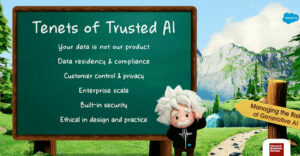
There’s a huge difference between the enterprise world and the social media community. While there are many signs of life on the social side, the rank-and-file Global 1,000 seem for the most part to be clueless. That’s not an indictment, just a statement of fact, and maybe opportunity.
At the Enterprise 2.0 conference in Boston last week, I got an eyeful of the reality. It’s still very early in this market’s evolution. The vendors are all lined up, including the small innovators and the big companies looking to cash in by being fast followers. But what’s missing is the numbers of interested companies ready to be saved by the new solutions, a.k.a. “customers.” I haven’t witnessed the beginnings of a land rush for social technologies in the big companies that will ensure its success.
Perhaps everyone is tired and cautious after witnessing in rapid succession the rollouts of enterprise ERP and CRM. They were both large-scale infrastructure plays that were as necessary to modern business as they were painful to implement. A few weeks back, I posted an article comparing the growth in U.S. GDP and the rise of the information age. From a baseline of US$1.6 trillion in 1975, the GDP has steadily risen to over $14 trillion today. Other regions of the world have seen similar expansions.
What Does It Mean for My Bottom Line?
If it’s not institutional memory holding the market back — and “holding back” may be too strong a phrase — it could be that people in the enterprise just don’t understand in sufficient numbers yet the only thing that counts. Maybe too few people see a way for social technologies to help them make money. The halls of the Enterprise 2.0 conference were not exactly jammed with pioneers and pilgrims trying to get wise. But don’t get the wrong idea; the show was in a big place, and it was well enough attended to call it a success. All I am saying is that the stampede has not yet started.
So what will it take for the avalanche to begin?
For a long time I’ve been harping on the challenges all companies face in demographic changes and, most importantly, transportation costs. As we discover that fuel price fluctuations will adversely affect business, we might see greater adoption of social strategies in the biggest companies.
But that’s asking a lot. Here’s why. Back in May, I was in Chicago for a speech, and I noted the high cost of gasoline. It was approaching $5 per gallon, and at the time people were mad about high prices all over the country. Since then, prices have eased, and in many places gas is a relative bargain at less than $4. A few years ago $3 and change didn’t seem like a bargain, but it shows what you can accommodate.
Double Danger
Now, this isn’t good news for a couple of reasons. First, fuel prices mirror economic activity. When prices are on the rise, it’s because demand is higher due to increased economic activity. The reverse is also true, but it can take many months for the effects to be fully realized as an economic downturn. This latency is a big problem because it separates cause and effect in many people’s minds. As fuel prices fall, we reap a temporary gain and think that things are returning to normal, but we may fail to notice the country simultaneously slip back into recession. I am not forecasting this, but it’s on my mind.
The second reason for concern is that fuels are transitioning from a cheap commodity to a scarce and expensive one. Traditionally when this happens there’s a round of inflation and the market adjusts by bringing more supply to bear. As I’ve written before, that’s not happening. According to the IEA, global demand is about 90 million barrels per day (mbpd) and supply is 88 mbpd — enough of a shortfall to cause the price tightness we see.
Instability in some regions is no help either. Fuel is becoming more expensive in an absolute sens, and that affects business from raw materials to travel. In a situation where supply is limited, a round of inflation will simply breed another round of inflation, and in short order, stagnation.
Social Media’s Play
Alternatives include various transportation substitutes, including smaller cars, less flying, bio-fuels, trains and electric cars. All of these require at least some modest change to infrastructure, which is expensive and will take many years. On the other hand, the Internet is an already-built infrastructure, and social media is well-developed and understood and can fill in for at least some of the transportation demand by making us more attuned to customers and more responsive to them.
As the transportation issue unfolds, it might prove to be the driver that enterprises need to begin thinking outside of their boxes. It’s going to take a lot, because we’re not simply talking about adopting a new technology. We’re talking about changing out a hierarchical management structure that goes back to the industrial revolution for something that is distributed, inclusive and very 21st-century.
For some companies, that will make implementing ERP and CRM look like child’s play.























































I think it’s important to differentiate between personal social media, which in many cases is just a time-waster, and social media (or perhaps more appropriately called networking technology) applied to business purposes: communications, tele- and videoconferencing, webinars, instruction, just as a starter list. For example, why would you need Twitter when you already have instant messaging? Then there is also the very real concern about security in the social media environment. I’m sure there will be some version of enterprise social media but frankly I believe decision-makers in the world of enterprise communications are being wise by not rushing headlong into this area. I can see the first applications being in customer-facing areas — CRM, Marketing, anything that establishes a true dialogue with the customer — but in other areas, maybe not so necessary.